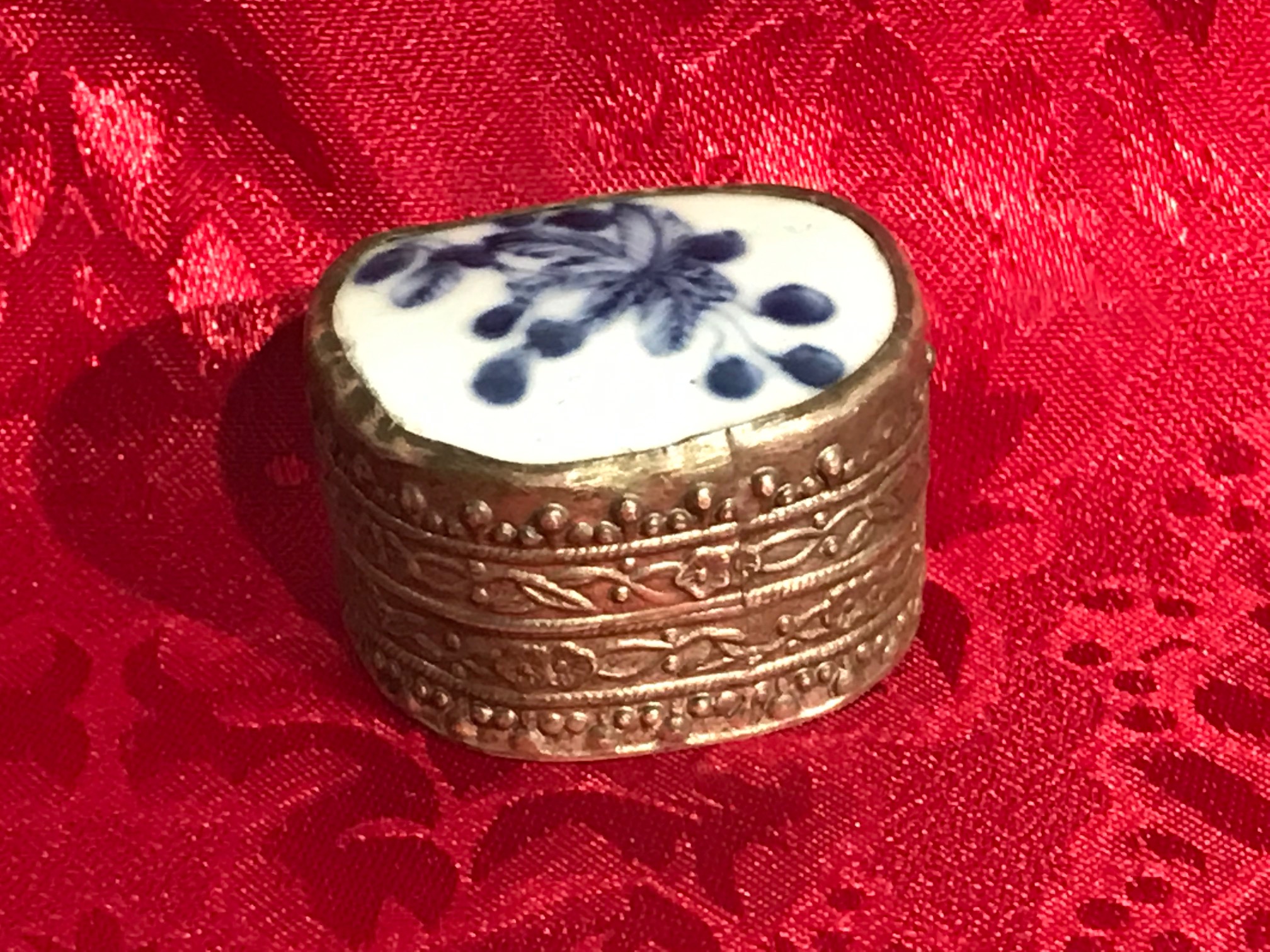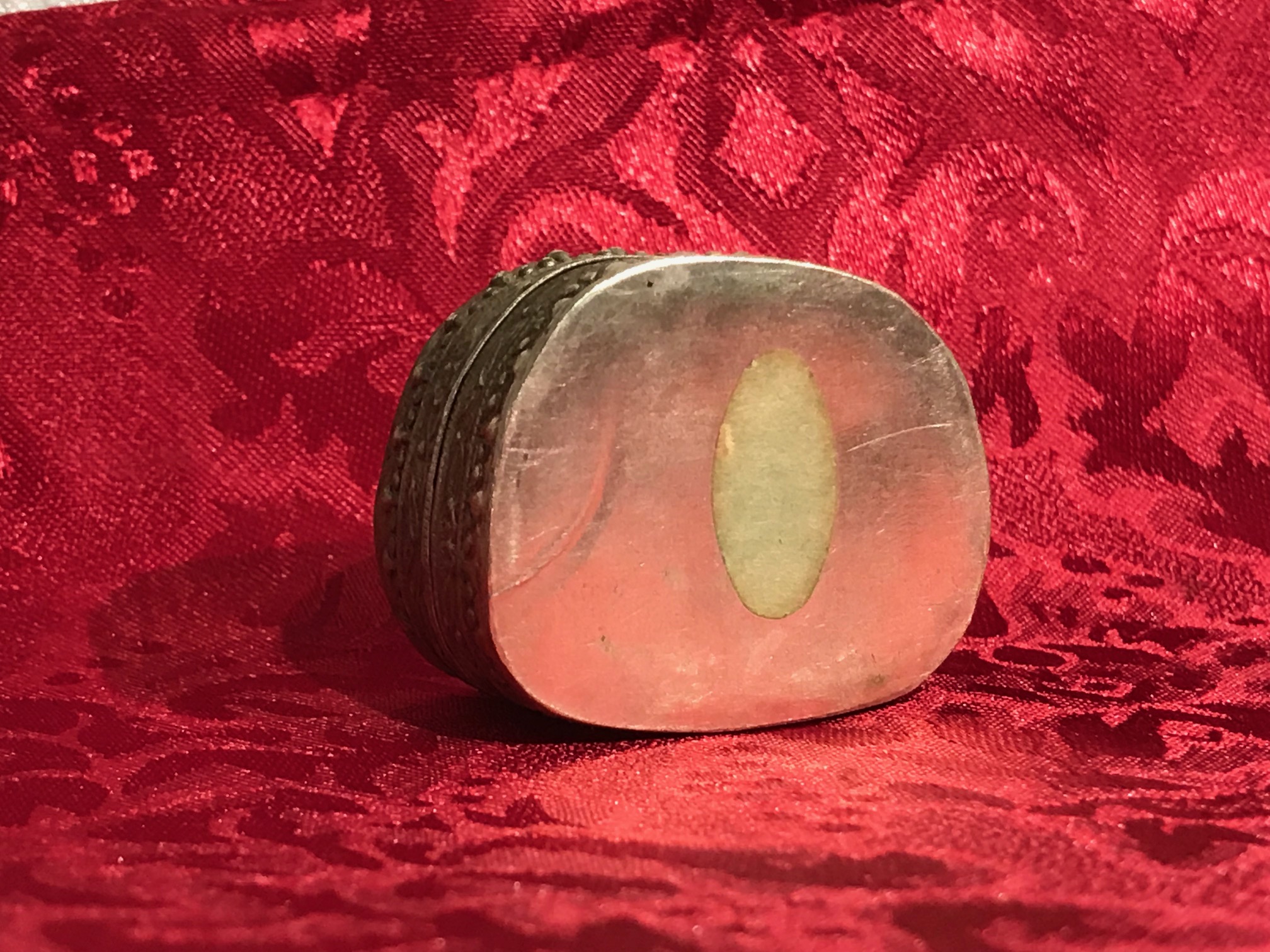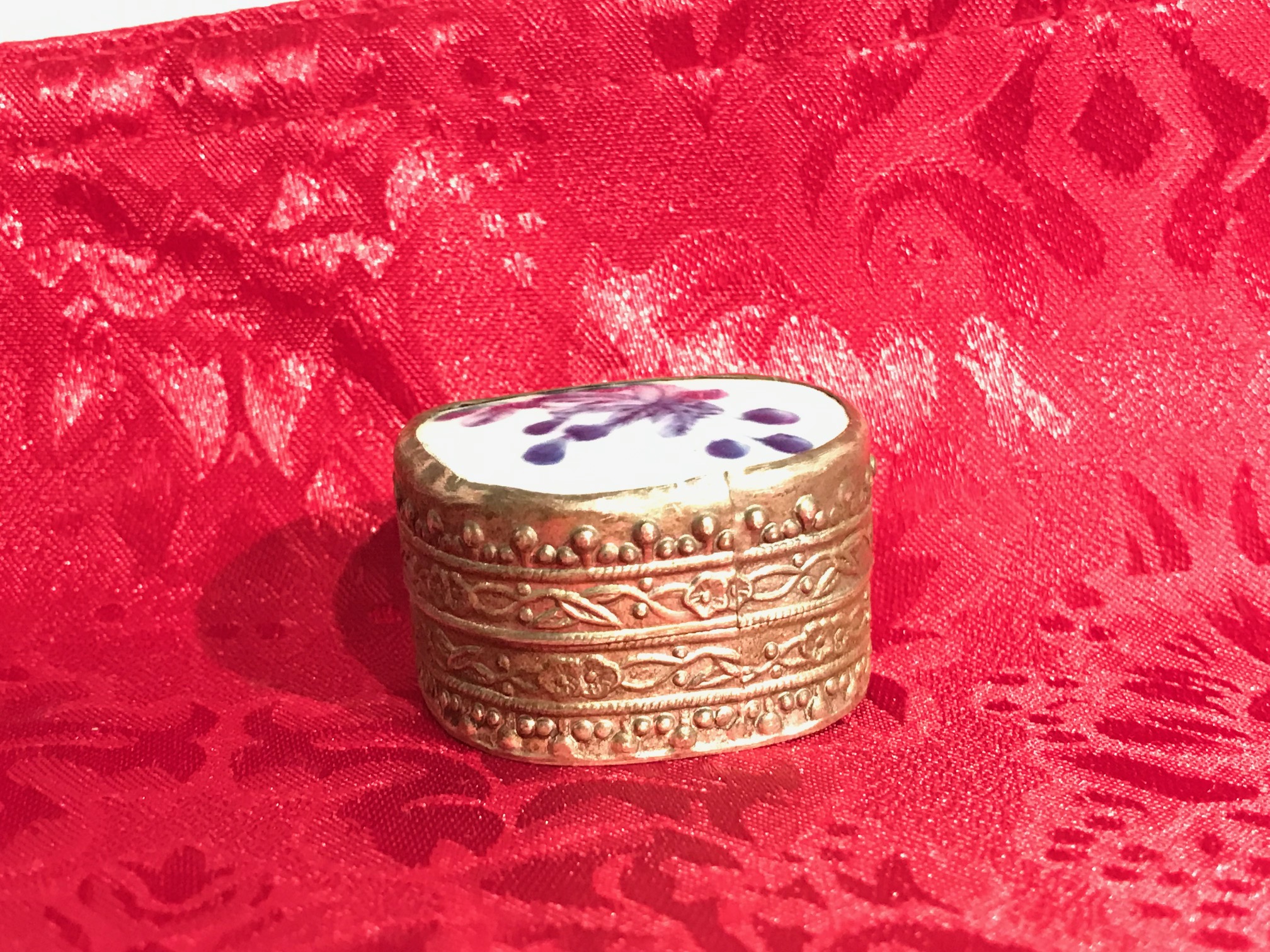Small metal curio box with porcelain lid: 533 ppm Lead (90 is unsafe for kids) + 14 ppm Cadmium
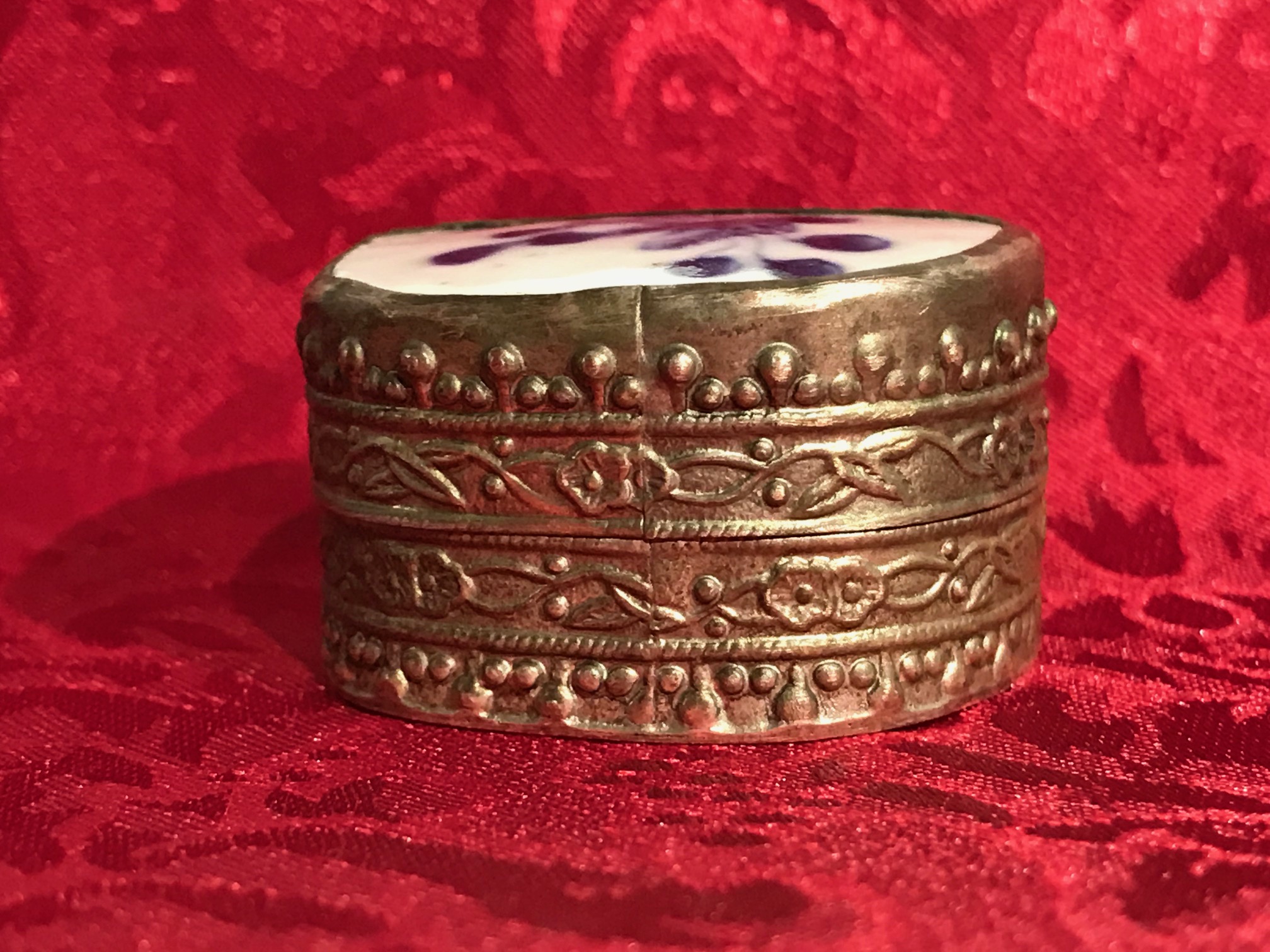 When tested with an XRF instrument this small metal box with a porcelain lid had the following readings:
When tested with an XRF instrument this small metal box with a porcelain lid had the following readings:
Silver colored edge:
- Lead (Pb): 533 +/- 177 ppm
- Chromium (Cr): 355 +/- 126 ppm
- Zinc (Zn): 1,267 +/- 429 ppm
- Copper (Cu): 944,000 +/- 1,400 ppm
- Iron (Fe): 1,167 +/- 281 ppm
- Silver (Ag): 51,400 +/- 800 ppm
Note: When I originally spoke about this in one of my videos I noted that I recalled that it had not tested positive for Lead. Additional testing (with a longer duration for each test) corrected that “misunderstanding” as, in fact, it did test positive for Lead. Sometimes with metal substrates (and as in this example, components made entirely of metal) you need a much longer duration test to get a truly accurate reading.
Continue reading below the image
Porcelain top (image above):
- Cadmium (Cd): 14 +/- 7 ppm
- Zinc (Zn): 41 +/- 16 ppm
- Nickel (Ni): 184 +/- 67 ppm
- Iron (Fe): 5,653 +/- 333 ppm
- Bismuth (Bi): 61 +/- 12 ppm
- Vanadium (V): 112 +/- 25 ppm
- Titanium (Ti): 227 +/- 37 ppm
- Cobalt (Co): 1,873 +/- 161 ppm
- Manganese (Mn): 11,700 +/- 161 ppm
Continue reading below the image
Silver colored bottom (image above):
- Lead (Pb): 271 +/- 127 ppm
- Zinc (Zn): 1,212 +/- 426 ppm
- Copper (Cu): 978,700 +/- 1,200 ppm
- Iron (Fe): 778 +/- 239 ppm
- Titanium (Ti): 5,113 +/- 469 ppm
- Silver (Ag): 12,400 +/- 400 ppm
Test results reported on this blog are accurate, science-based and replicable. Testing was done for a minimum of 60 seconds per component and repeated multiple times to confirm the results. Each set of results found was similar to the results sets noted above. If a metal is not listed for any component it was not detected in that component using the XRF in “consumer goods” mode – which tests any metals down to single digit parts per million.
How much Lead is unsafe?
While little boxes like this are not generally regulated at all currently (and vintage ones never were!)– as they are not manufactured or marketed as “items intended for use by children” (they are in fact generally considered to be “home decor” — which is a wholly unregulated category of consumer goods!), for reference, the amount of Lead that is considered illegal and unsafe in an item that is expressly manufactured and sold as something to be used by children is anything 90 ppm Lead or higher in the paint, glaze or coating and anything 100 ppm Lead or higher in the substrate. Given this came in at 553 ppm Lead, it would not be considered safe for a child to “play with” or “use” (from a Lead-perspective).
To see more curio boxes I have tested, click here.
As always, please let me know if you have any questions.
Thank you for reading and for sharing my posts!
Tamara Rubin
#LeadSafeMama
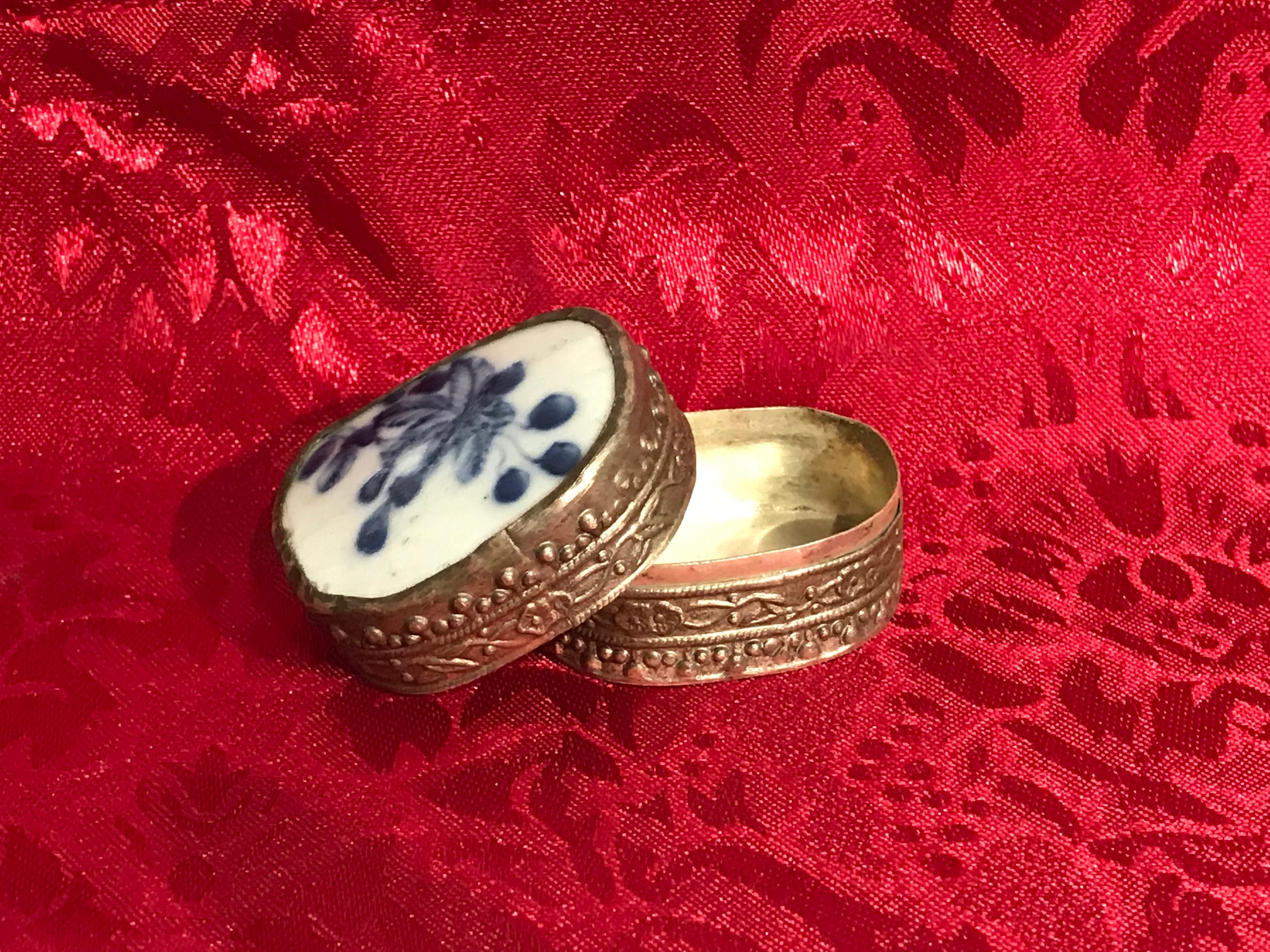
Never Miss an Important Article Again!
Join our Email List


